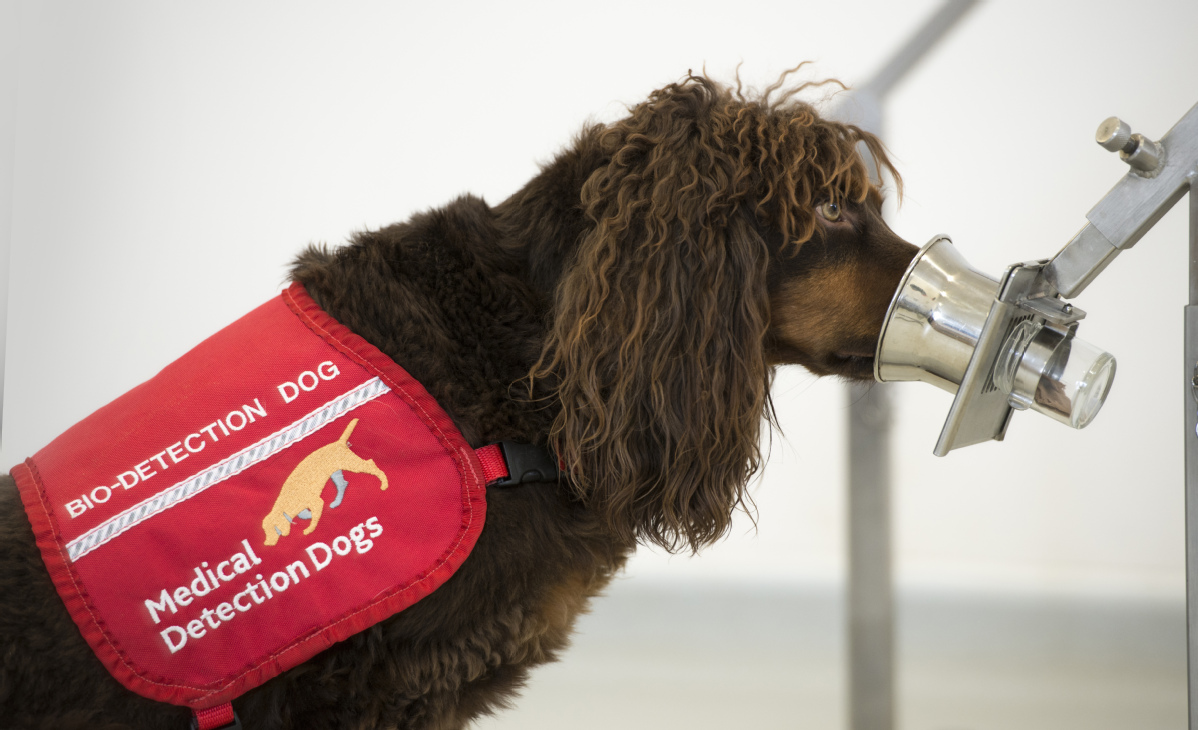Dogs hot on the trail of covid-19 cases


For many years, humanitarian organizations in Africa used Gambian pouched rats to detect landmines left behind after conflicts in Angola and Mozambique. A decade ago, researchers in Tanzania discovered these animals are also adept at detecting tuberculosis in humans with a greater degree of accuracy than conventional smear tests.
Guest and Logan are joining a team that includes Steve Lindsay, a veteran professor of disease science from Durham University in northeast England. The three collaborated on a project that proved dogs can detect the difference between healthy individuals and those with malaria, with more than 90 percent accuracy, well above the threshold for diagnostics recommended by the World Health Organization.
"When this pandemic arose, we said that if we can do it with malaria, can we do it with COVID-19?" Lindsay said, adding that he would be pleased if the dogs achieve an accurate rate of 80 percent or more.
Last month, a study published by the National Veterinary School of Alfort in France found high levels of accuracy for COVID-19 detection among dogs. Eight dogs and 368 samples taken from the armpits of healthy people and those infected with COVID-19 were involved in the study, which found the dogs had an overall detection success rate of 95 percent.
The study has not yet been peer reviewed. More results should emerge from a study being conducted at the University of Pennsylvania's School of Veterinary Medicine in the United States, which recently began COVID-19 detection research with eight dogs.
Meanwhile, the team in the UK has reason to suspect that humans can detect the smell of COVID-19, thanks to anecdotal evidence from some 20 medical professionals.
Logan said: "We've had lots of health workers contacting us saying'I can smell it on people. When I get to work and go into the ward, I can smell it, or when someone comes in I can smell it.' Some of them have said it's a musty smell that's difficult to describe, which is often the case with humans, who are not good at describing smells."
The project is concentrating on three objectives in the early stages: initial training of the animals; collecting samples; and isolating COVID-19.
The London School of Health and Tropical Medicine is distributing socks, face masks and T-shirts to 3,000 National Health Service workers, who will wear the clothing for 12 hours at a time. They will also be tested for the coronavirus.
Some of the garments will be used to isolate disease odors, using a process called gas chromatography. The remainder will be taken to the training center in Milton Keynes. The trainers will not know which samples bear the COVID-19 infection odor and those that do not. An independent statistician will analyze the data to assess the dogs' proficiency in sniffing target samples.
























